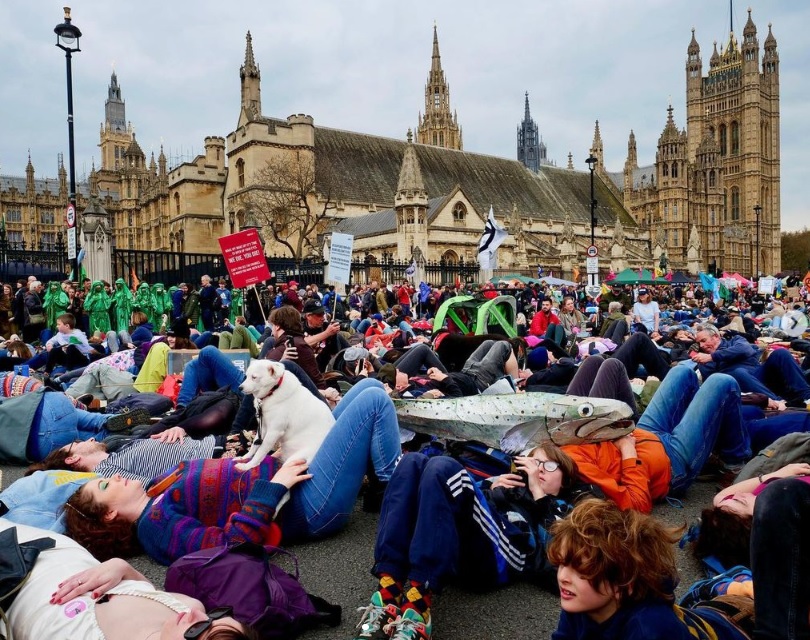
Many scholars have considered why environmental activists and anti-speciesist activists have not aligned more closely. Dale Jamieson, a leading philosopher in environmental ethics, has indicated many overlapping areas between the two respective movements, such as a similar origination from mid-20th century social justice efforts. Sociologist Amy Fitzgerald has also noted the shared interest in conserving free-living species.
Yet, both Jamieson and Fitzgerald note that there tends to be a failure for environmentalists to look beyond popular holistic approaches to conservation to consider implications for individuals. What happens to animals framed as “overpopulated” or “non-native,” for instance? Anthropocentrism remains protected in environmental approaches, as humans maintain ultimate power for decision-making and management. Anthropocentrism and killing animals are approaches that are, of course, antithetical to the anti-speciesist agenda.
This anthropocentrism is also androcentric as men dominate academic, policymaking, and charity leadership positions. They tend to normalize the idea that violence (such as “sacrifice” or “culling”) is expected, that control and human interference are needed to manipulate species and ecosystems (or that complete non-interference is needed, abandoning animals in need), and that compassion for marginalized groups is less relevant or even too emotional and irrational.
More and more, the science of climate change is now demonstrating that animal products are a leading cause of environmental degradation, a body of evidence that is becoming difficult to ignore. However, the ideological shift that is needed–seeing animals not as objectified climate-destroying consumables, but as a marginalized group whose oppression is actually foundational to the degradation of the earth–still lacks. Until we start to see animals as persons and reject hierarchies of domination, the two movements will never fully align.
The professionalization of social justice movements has complicated this misalignment, as compromise becomes inevitable as large charities are more and more reliant on big donors to survive. Industries can thus infiltrate the very movements that threaten their viability by using their financial sway to disincentivize radical positions. If environmental organizations were to challenge Big Meat and Dairy, they challenge their viability in funding efforts. They would also come against more state resistance, as meat and dairy are a major element of GDP for most.
That said, this chasm may be closing. There was a considerable vegan, anti-speciesist presence at the April 2023 Extinction Rebellion protest in London, the biggest environmental protest in English history. But to achieve meaningful alliance, the responsibility will lie with the environmental movement. The truth is that most vegans are environmentalists, and few environmentalists are vegan. It is questionable how much further Nonhuman Animal rights activists can stretch their frames to appeal to environmentalists without invisibilizing Nonhuman Animals further.
The Plant-based Universities campaign in the UK, for instance, has been very successful at pushing higher education institutions to adopt vegan catering, but Nonhuman Animals are not mentioned at all, even though the group organizing it is an anti-speciesist group (Animal Rising) that had previously organized as a subgroup of Extinction Rebellion. The campaign represents a successful collaboration between the two movements, but Nonhuman Animals are completely (and intentionally) devoid from the claimsmaking. That is problematic. Alliances that require the erasure of vulnerable groups are not true alliances; they fail to challenge the very ideologies of domination that create the systemic violence that all movements resist.
 Readers can learn more about the social movement politics of Nonhuman Animal rights and veganism in my 2019 publication, Piecemeal Protest: Animal Rights in the Age of Nonprofits. The beautiful cover art for this text was created by vegan artist Lynda Bell and prints are available on her website, artbylyndabell.com.
Readers can learn more about the social movement politics of Nonhuman Animal rights and veganism in my 2019 publication, Piecemeal Protest: Animal Rights in the Age of Nonprofits. The beautiful cover art for this text was created by vegan artist Lynda Bell and prints are available on her website, artbylyndabell.com.
Receive research updates straight to your inbox by subscribing to my newsletter.